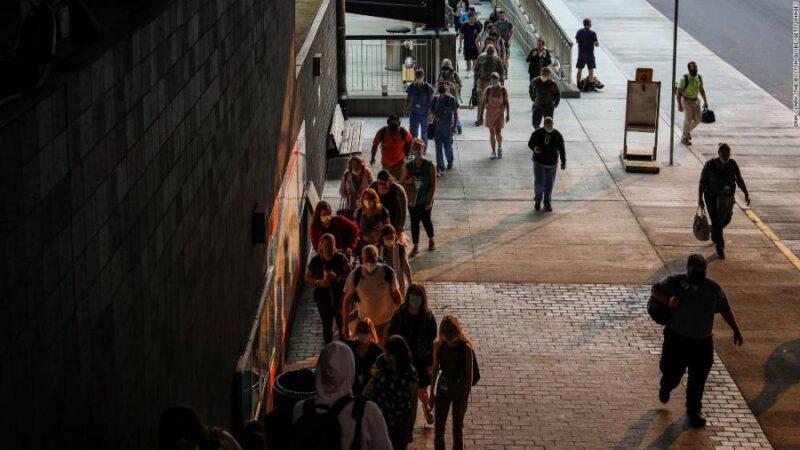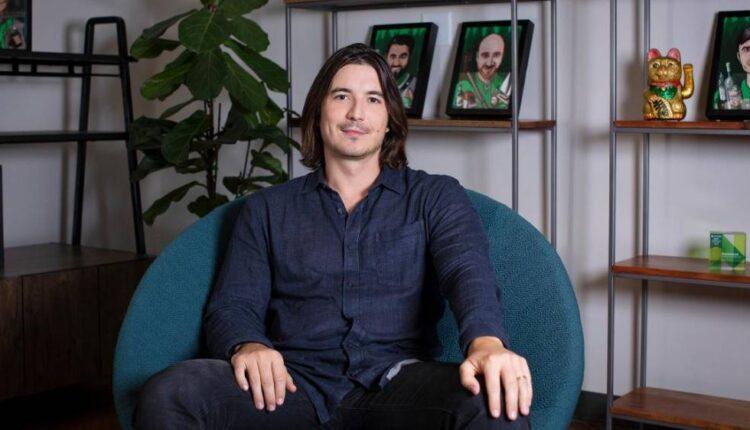A version of this story first appeared in CNN Business’ Before the Bell newsletter. Not a subscriber? You can sign up right here.
London (CNN Business)Robinhood makes its Wall Street debut on Thursday. The fast-growing trading app has provided a new generation of everyday investors with access to financial markets, but it’s also highly controversial.
What’s happening: The company’s initial public offering priced at $38 a share. On the low end of the expected range, that values the firm at $32 billion, and suggests demand may have been softer than anticipated.But the action isn’t over yet. Investors and IPO experts are closely watching Robinhood’s first day of trading on the Nasdaq.

Robinhood raises less than it had hoped in IPOMuch of the interest is due to an unusual feature of Robinhood’s IPO. The company set aside up to 35% of shares for individual investors on its platform — a huge chunk of stock that could fuel initial volatility.
“As I recall, there has not been a company doing what Robinhood is planning to do at the magnitude they’re planning to do it,” said R.A. Farrokhnia, a professor at Columbia Business School and executive director of the Columbia Fintech Initiative. He added that if the process doesn’t go smoothly, Robinhood would be in “uncharted regulatory territory” at a time when the company is already under the microscope.Read MoreBig picture: Robinhood’s stated mission is democratizing financial markets. In line with that message, it’s tried to make its IPO more accessible to retail investors and not just the financial elite, in part by offering a sizable portion of shares to customers at the IPO price.Typically, up to 85% of IPO shares will go to institutional investors like hedge funds and money managers, according to Reena Aggarwal, a professor of finance at Georgetown University. The remainder are allocated to individual investors — but banks often distribute them among high-net-worth clients. “IPOs haven’t been allocated to retail investors in a big way,” she said.That leaves these investors out of luck when new stocks experience a typical “pop” on the first day of trading, soaring above the offer price.That’s not a problem this time around, at least if you use Robinhood. But the scale of the company’s retail allocation is creating lots of uncertainty.Watch this space: If the stock makes big moves in early trading, some customers may opt to sell their shares, generating turbulence.Like other brokerages, Robinhood’s IPO access program has a policy to discourage what’s known as “flipping,” the practice of reselling shares shortly after an IPO to net a quick profit. Robinhood customers who sell shares within 30 days of an IPO may be barred from participating in IPOs for 60 days.Yet Aggarwal still expects some flipping to take place.”If the stock jumps up a huge amount, there’s going to be retail investors who say, ‘I want to cash out,'” she said. Robinhood will build up goodwill with customers and drum up publicity for its IPO product if the effort runs smoothly, according to Farrokhnia. But if there are technical glitches or other problems, the company could find itself in trouble.”Robinhood already has been in the hot seat,” he said. “Can they afford this?”See here: Earlier this week, Robinhood disclosed that regulators are investigating the fact that CEO Vlad Tenev is not licensed with FINRA, Wall Street’s powerful self-regulator. They’re also probing whether Robinhood employees traded shares of GameStop (GME), AMC (AMC) and other meme stocks before the app instituted restrictions during January’s frenzy.Last month, FINRA slapped Robinhood with its biggest-ever penalty, accusing the company of giving investors “false or misleading information.” One issue the agency cited was Robinhood’s options trading procedures, which were at the heart of a recently-settled lawsuit filed by the family of a 20-year-old Robinhood trader who died by suicide last year.Such regulatory headaches are reason to think Robinhood shares could be choppy in the long run, as well as in the near term, Aggarwal said.
GDP data will shine a light on the US recovery
Just how strong was the US economy heading into the summer?Investors and economists will get a look on Thursday, when the US Bureau of Economic Analysis releases a first look at gross domestic product for the April-to-June period.

The economy is still not back to normal. The Delta variant won't make it easierEconomists polled by Refinitiv expect GDP, the broadest measure of economic activity, grew at an annualized pace of 8.5% in the second quarter. That would mark the biggest advance since the third quarter last year, when the economy roared back following a sharp contraction, my CNN Business colleague Anneken Tappe reports.Citi economist Veronica Clark attributes the predicted strength to massive consumer spending on goods and services.”Spending on many services, such as dining at restaurants, returned to pre-Covid levels by the end of [the second quarter],” Clark said in a note to clients. But there’s room for further to improvement in the second half of this year, she added.Not back to normal: The road to recovery has become more challenging, however. The Back-to-Normal index created by CNN Business and Moody’s Analytics has been static over the past few weeks at 92%.”Though it’s hard to tease out in the data just yet, I primarily attribute the potential slowdown to the Delta [variant’s] spread,” Moody’s Analytics associate economist Matt Colyar told CNN Business. For example, business confidence “was on a tear in May and June,” Colyar said, but the renewed rise in infections has put that momentum in jeopardy. While “no one seems to think sweeping restrictions are coming back,” he continued, the risks posed by new Covid variants are starting to sink in.
The Delta variant is complicating the return to work
Mask mandates. Vaccine requirements. Increased testing. Just as companies were preparing to regularly bring employees back to the office, the Delta variant has triggered a surge in coronavirus cases, forcing employers to reconsider their policies.See here: President Joe Biden will announce Thursday that all federal employees and contractors have to be vaccinated against Covid-19 or submit to regular testing. On Wednesday, Facebook (FB) and Google (GOOGL) said they’d require employees to be vaccinated when they return to work.”Getting vaccinated is one of the most important ways to keep ourselves and our communities healthy in the months ahead,” Google CEO Sundar Pichai said in an email to staff.Google is also pushing back its return-to-work plan. It had intended to formally end its work-from-home period on Sept. 1. Now it will wait to bring most employees back until Oct. 18.Masking is a crucial issue after the Centers for Disease Control and Prevention updated its guidance on Tuesday, recommending that vaccinated people wear masks indoors in areas of “substantial” and “high” transmission of Covid-19. Disney World and Disneyland will require masks indoors again, the company said Wednesday.In short: Don’t pack up the home office just yet.
Up next
Hershey Foods (HSY), Hilton (HLT), Keurig Dr. Pepper (KDP), Mastercard (MA), Merck (MKGAF), Molson Coors (TAP) and Yum! Brands (YUM) report results before US markets open. Amazon (AMZN), Gilead Sciences (GILD) and Pinterest (PINS) follow after the close.Also today: US GDP data for the second quarter arrives at 8:30 a.m. ET, along with last week’s jobless claims.Plus, today at 11 a.m. ET, CNN Business presents “Foreseeable Future: A Conversation about the Workplace Revolution.”
Join CNN Business’ Kathryn Vasel in conversation with Microsoft CEO Satya Nadella, followed by a panel discussion with DocuSign CEO Dan Springer, Vimeo CEO Anjali Sud and BetterUp Co-Founder and CEO Alexi Robichaux. To reserve a spot now, RSVP here.
Source: edition.cnn.com

